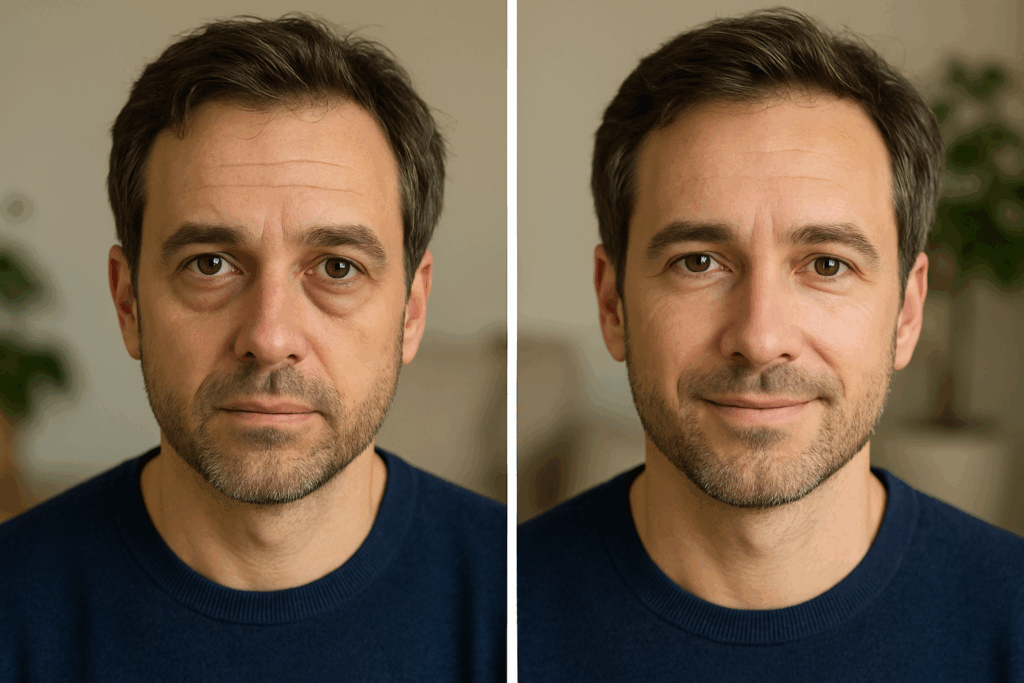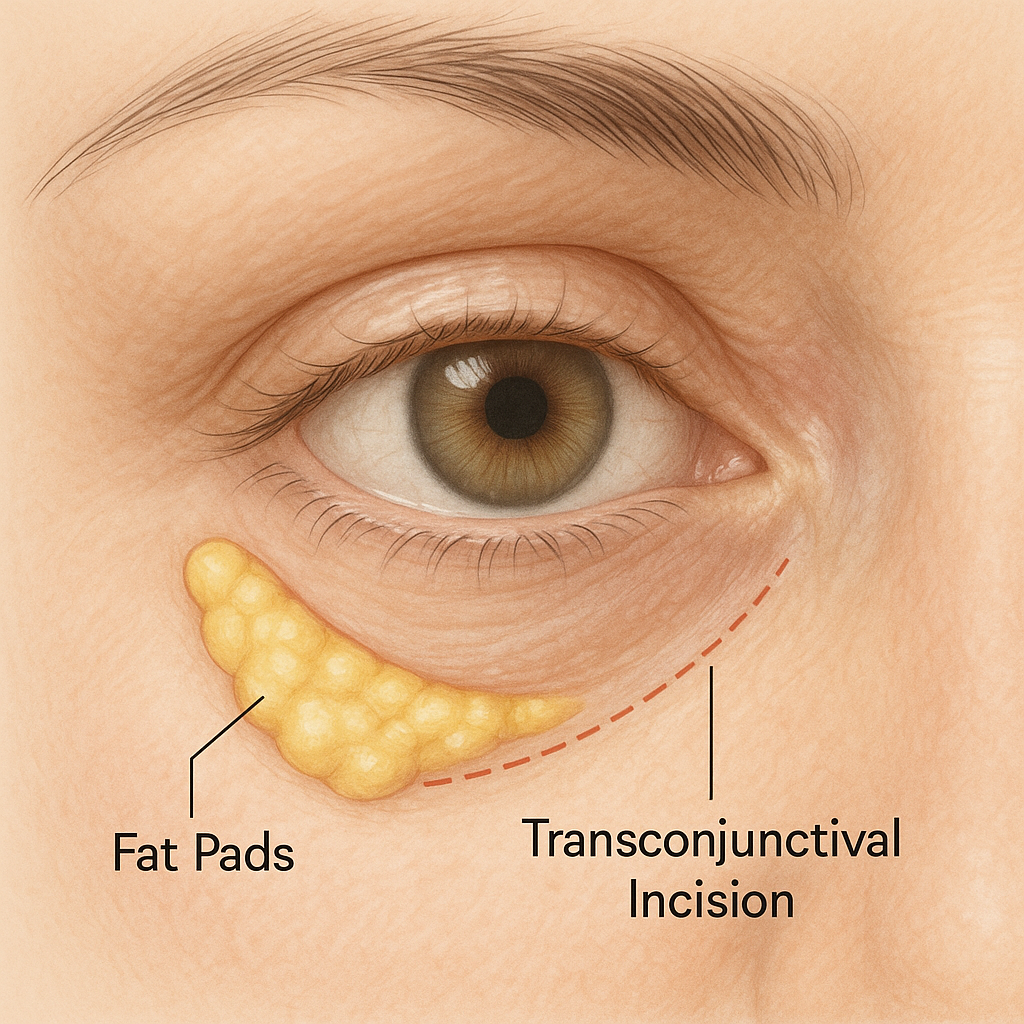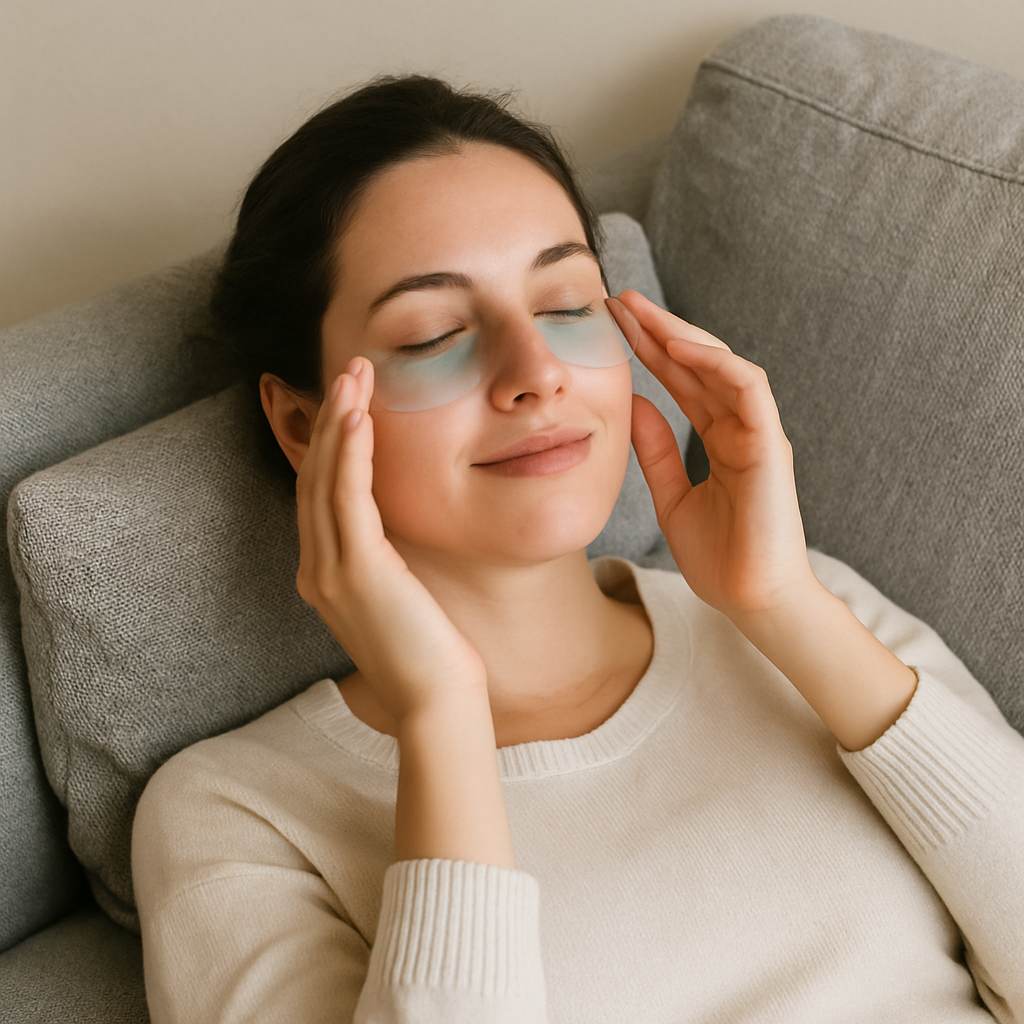Under‑eye bags can make you look tired or stressed even when you’re not. Lower blepharoplasty is a precise procedure that smooths puffiness, softens crepey skin, and restores a natural lid‑cheek transition—without changing your expression. At Dr. Richard Peck’s Northern New Jersey practice, we tailor lower eyelid surgery to your anatomy for results that look refreshed, not operated.
Why Under‑Eye Bags Form
- Fat prolapse: orbital fat pushes forward, creating visible “bags.”
- Skin laxity & texture: thinning, crepey skin makes puffiness more noticeable.
- Tear‑trough hollowing: a groove beneath the bag deepens shadows.
- Support changes: aging can relax the lower lid’s supporting structures.
Your exam identifies which factors matter most so we can target them thoughtfully.

Technique Choices (Personalized to You)
Transconjunctival approach (internal incision)
Ideal when puffiness is from fat pads. The incision is inside the lower lid—no external skin scar. Fat is conservatively reduced or repositioned to fill the tear trough for a smoother contour.

External approach with skin pinch
Useful when there’s excess skin. A fine incision just under the lashes allows a careful skin pinch (and, when indicated, muscle tightening). Often paired with transconjunctival fat work.
Fat repositioning vs. removal
Whenever possible, we reposition fat to soften hollows and avoid a hollowed look. Limited removal is used selectively for balance.
Laser blepharoplasty / “laser eye lift” (as an adjunct)
Ablative or fractional laser resurfacing can be added to refine crepey skin and fine lines. The laser is a tool that complements surgery—it doesn’t remove bags by itself.
Lid support
In certain anatomies, a canthopexy (subtle outer‑corner support) may be added to maintain natural lid position.
Who’s a Good Candidate?
- Persistent under‑eye puffiness not improved by skincare
- Good skin/eye health and realistic expectations
- Understands that pigment‑based dark circles and prominent vascularity may need separate treatments (topicals, lasers, skincare) rather than surgery alone
Day of Surgery
- Anesthesia: IV sedation or local anesthesia with sedation depending on the plan
- Time in office: typically 1–2 hours; you return home the same day
- Sutures: tiny external stitches (if used) are usually removed at ~1 week; internal incisions use dissolvable sutures
Recovery Timeline (Typical)
- Days 0–3: swelling and bruising peak; use cold compresses and sleep head‑elevated
- Days 4–7: bruising begins to fade; stitches (if present) often removed around a week
- About 10–14 days: many patients feel comfortable in public with light concealer
- Weeks 2–6: residual swelling settles; results continue to refine
We’ll give you tailored guidance on lubrication, activity limits, eye drops, and when to resume contacts and makeup.

Results & Longevity
Lower blepharoplasty can offer long‑standing improvement. While natural aging continues, smoothing the lid‑cheek junction and addressing fat prolapse often provides benefits for many years. Sun protection and healthy habits help maintain your outcome.
Dr. Peck’s Approach
As a board‑certified plastic surgeon, Dr. Peck favors conservative, anatomy‑guided techniques that preserve eyelid support and avoid over‑resection. The plan may combine transconjunctival fat work, selective skin pinch, and laser resurfacing for a balanced, natural look.
Frequently Asked Questions
Will I have a visible scar?
Not with a transconjunctival (internal) approach. If an external skin pinch is needed, the fine incision rests just below the lashes and typically fades very well.
Can fillers replace lower blepharoplasty?
Sometimes—for mild hollowing without significant fat prolapse or loose skin. True bags and laxity usually respond best to surgery, with or without laser.
Will surgery fix my dark circles?
It can reduce shadowing from bags and hollows. Dark color from pigment or visible vessels may need separate treatments.
How long is recovery?
Plan for about 1–2 weeks before most social/desk activities. Swelling continues to improve over several weeks.
When can I wear contacts or eye makeup?
Contacts are typically paused for 1–2 weeks until irritation resolves. Makeup resumes after incisions have sealed and stitches (if any) are removed.
What is “laser blepharoplasty”?
It usually means adding laser resurfacing during eyelid surgery to improve fine lines and texture. The laser is an adjunct, not a substitute for bag removal.
What are the risks?
Temporary swelling, bruising, dryness, or asymmetry can occur. Rare risks (infection, prolonged swelling, lid malposition) are reviewed at consultation; careful technique reduces these odds.
Ready to Smooth Under‑Eye Bags?
Meet with Dr. Peck in West Orange or Cedar Knolls to discuss a personalized plan—surgical and non‑surgical—that fits your anatomy, goals, and timeline.
Explore the series:
• Blepharoplasty Guide: Upper vs. Lower, Candidacy & Recovery
• Upper Blepharoplasty: From Hooded Lids to a Natural Crease
• Non‑Surgical Eyelid Rejuvenation: What Works—and When Surgery Wins
Educational content only; not medical advice. Please book a consultation for personalized recommendations.